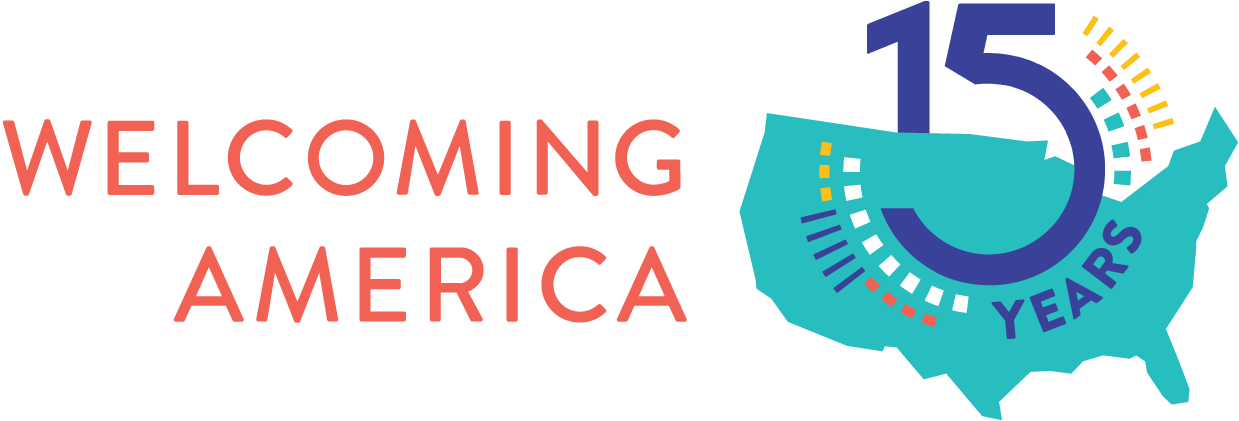
The Welcoming Standard
The Welcoming Standard is a comprehensive roadmap for communities to become more welcoming places.
The Welcoming Standard sets criteria, or benchmarks, that local governments, community organizations, residents, and others can use to hold welcoming places accountable and spur innovation.
There are seven framework areas of the Welcoming Standard that define truly welcoming places: Civic Engagement, Connected Communities, Economic Development, Education, Equitable Access, Government and Community Leadership, and Safe Communities.
Civic Engagement
Welcoming communities ensure that all residents, including immigrants, are able to fully participate in civic life. Immigrant residents have access to democratic spaces, and shape community priorities and policies. Immigrants hold leadership roles in the community, and local institutions are invested in increasing access to leadership positions for immigrant residents.
Connected Communities
Welcoming communities build connections and trust between residents. Community institutions — including local government, businesses, faith communities, and nonprofits — create opportunities and spaces for immigrant and non-immigrant residents to have constructive interactions, develop relationships, and deepen their understanding of one another. Institutions support residents in building their personal capacity to engage with people different from themselves on equal footing and in sustained ways that reduce prejudice and strengthen diverse community relationships.
Economic Development
In welcoming communities, all residents — including immigrants — can participate fully in the economy. Workforce and economic development infrastructure address the priorities and needs of immigrant residents and immigrant job seekers. Programs that support entrepreneurship, business development, and workforce development are accessible to all residents, including immigrants. Local businesses are committed to diverse hiring and retaining employees with diverse racial and ethnic backgrounds.
Education
In welcoming communities, the education system ensures all students, including immigrant students, have the support they need to thrive in school and the knowledge they need to succeed in the workforce. Schools and community education programs are informed by the needs and priorities of immigrant students and families, and are accessible to all residents, including immigrants. Welcoming and inclusion efforts are not siloed within a single school or program, but incorporated into the schools and school districts that serve the community.
Equitable Access
Welcoming communities ensure local services are accessible to all residents, including immigrants. Immigrant residents provide feedback to local government and community-based organizations to identify and address demographic disparities and gaps in services, and to improve access to programs, particularly in the areas of housing, health, transportation, financial services, and the justice system.
Government and Community Leadership
Welcoming communities have infrastructure in place to support immigrant participation, inclusion, and equity. The local government and community-based organizations regularly seek feedback from immigrant residents to understand the challenges and priorities of immigrant residents. Institutions work closely together to prioritize and build capacity to implement immigrant participation, inclusion, and equity strategies.
Safe Communities
Welcoming communities prioritize safety for all residents, including immigrants. Policies and practices are in place that prevent discrimination. Strong, trusting relationships are built between immigrant residents and local safety services, such as law enforcement, fire departments, code enforcement, and emergency response. Effective bidirectional communication between safety services and immigrant residents exists, and programs are in place to address implicit and structural bias. Community partnerships are built to identify and address needs and gaps in services.
How can my community use the Welcoming Standard?
The criteria in the Welcoming Standard reflect programs, policies, and practices that local governments and community organizations can implement to ensure that everyone, including immigrants, belongs.
Communities can use the Welcoming Standard to guide their next steps in building a welcoming community. For example:
- Advocates can use the Welcoming Standard to shape their policy agenda.
- States can use the Welcoming Standard to inform the assistance and resources they provide to communities.
- Local governments and community-based organizations can use the Welcoming Standard as an evaluation and planning tool.
Nonprofits and local government entities can also join the Welcoming Network as a member to receive technical assistance and resources that assist communities working to meet the Welcoming Standard.
Local governments can be assessed against the Welcoming Standard to become a Certified Welcoming community. Certified Welcoming offers local governments the opportunity to measure, promote, guide, and validate their welcoming efforts. Interested in becoming Certified Welcoming? Take this assessment quiz and learn more at certifiedwelcoming.org.
What Others Say
Leaders are using welcoming principles and practices, like those described in the Welcoming Standard, to build a world where everyone belongs.

